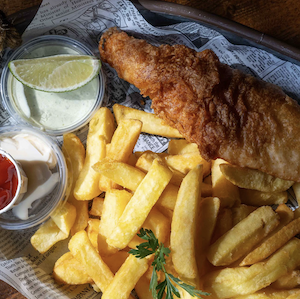TRIM; History Of Our Summers Essential
By Melusine Estebe-Bruault
Even though it is a real essential today, the bikini hasn’t always been appreciated. In 1932, Jacques Heim shocked the world by creating the “world’s smallest bathing suit,” called “Atome”. This little bathing suit was composed of bloomers and a bra with ruffles but was a commercial failure. This led to the creation of the first bikini in 1946. Louis Réard, a French designer, created the first bikini and promoted it as “smaller than the smallest bathing suit” and named after atomic bomb tests made by the U.S army at Bikini Atoll, in the Marshall Islands.
This bikini appeared for the first time on model Micheline Bernardini, a French nude dancer, at the Piscine Molitor in Paris (a very famous swimming pool at that time). It was considered inappropriate in many countries and only started to be popularized in the ’50s, thanks to celebrities such as Elizabeth Taylor or Marilyn Monroe. In 1962, Dr. No (the first James Bond movie) was released. One of the scenes in the movie that struck viewers the most was the scene where the James Bond girl Honey Ryder (played by Ursula Andress) comes out of the sea in a bikini.
The scene became a classic, as well as the white bikini Andress was wearing. This iconic scene was a turning point in the success of the bikini and made this little piece of cloth really popular. In 1960, Bryan Hyland, a popular American singer, released a famous single: “Itsy Bitsy Teenie Weenie Yellow Polkadot Bikini”. The song is about a young shy girl hesitating to wear her new polka dot bikini on the beach. At the time of the song’s release, the bikini had been accepted in Europe but was still controversial in the United States. The humorous tone and a pop rhythm of the song, sang by a really young and popular singer (Hyland was only 16 years old), helped a lot in the acceptance of the bikini.
Finally, the last thing that made bikini really popular was the first Sports Illustrated Swimsuit Issue, released in 1964 with Babette March on the cover. The American editor Andre Laguerre wanted to fill the winter months by showing something that would warm people’s hearts. The first edition was a huge success and immediately launched the model career of Babette March. Even nowadays, the magazine is still considered to launch a lot of careers in modeling.
In the 1960s, a new swimsuit also appeared: the monokini. Created by Austrian/American designer Rudy Geinrich in 1964, the audacious monokini was a regular swimsuit excepted the fact that… It let women’s breasts out! Indeed, the bottom of the monokini was a simple swimsuit bottom , but it ended around the waist, and the top of the monokini was just composed of two laces going between the breasts and around the neck. It was the first time in history women were topless on the beach.
Worn for the first time by Geinrich’s mascot model Peggy Moffitt, the monokini was considered controversial and scandalous, but Geinrich never meant it to be worn in public and didn’t even want to make commercial use of it. For the designer, it was a political statement, as being topless was also a form of freedom for women. That’s right — if men can show their torsos, why couldn’t women do the same and show their breasts? Ironically, at this time, women were starting to take off their tops on the beaches and the monokini was a huge success, and one of the starting points of toplessness on beaches. Geinrich then designed the pubikini (which showed women’s pubic region) in 1985 but this creation just remained one of his political statements and never had a real commercial use ( for a major part because nudism became more popular in the 1960).
Nowadays, we have a lot of different bikini styles: from the bandeau style to the sling bikini (also called onepiecekini) or the string bikini, women can find the perfect swimsuit and tan with a great style on the beaches during summer. And you, which style of bikini will you purchase for next summer?








